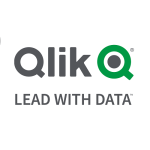What is our primary use case?
We receive the data files from insurance carriers. We load the data, do some processing, and then make the data available to their internal systems. We apply some business transformations and data validations and share the data in the healthcare domain and EDI B2B exchange.
Its version varies based on the customer, but when it comes to the cloud, we have the latest version. We have been using Informatica Intelligent Cloud Services (IICS) for two years. We have used IICS for two purposes. One is for data integration, and the other one is for application integration.
What is most valuable?
Complex transformations can be easily achieved by using PowerCenter. The processing layer does transformations and other things. About 80% of my transformations can be achieved by using the middle layer. For the remaining 15% to 20% transformations, I can go in and create stored procedures in the respective databases. Mapplets is the feature through which we can reuse transformations across pipelines. Transformations and caching are the key features that we have been using frequently.
Informatica PowerCenter is one of the best solutions or products in the data integration space. We have extensively used PowerCenter for integration purposes. We usually look at the best bridge solution in our architecture so that it can sustain for maybe a couple of years. Usually, we go with the solution that fits best and has proven and time-tested technology.
What needs improvement?
Its licensing can be improved. It should be features-wise and not bundle-wise. A bundle will definitely be costly. In addition, we might use one or two features. That's why the pricing model should be based on the features. The model should be flexible enough based on the features.
Their support should also be more responsive to premium customers.
For how long have I used the solution?
We have been dealing with this product for around 20 years.
What do I think about the stability of the solution?
What do I think about the scalability of the solution?
It is easy to scale. It has the concept of a grid, but it is too costly because you also need Informatica big data edition. Informatica PowerCenter has its own software licensing called big data edition. So, whenever we want to scale to a huge volume, we need to go with big data. It has horizontal scaling, which always impacts the price. I can go for a four-node cluster grid or an eight-node cluster grid, which will have an impact on the price.
We have scaled it for one of our enterprise customers, and we had a little bit of complexity in setting it up, but we were able to achieve the desired goals with respect to the performance.
How are customer service and technical support?
We have been in touch with Informatica support. They should be more responsive. They should react quickly to premium customers.
Which solution did I use previously and why did I switch?
Different products are suitable for different use cases. One unified product cannot address multiple use cases. For example, Informatica may not be suitable for real-time integration, but it may be helpful for batch integration. Similarly, MuleSoft caters to low latency, but it doesn't get into high latency, which means it is not suitable for larger data processing systems. That's why we need to have a combination of technologies. For example, I may say that I have a resource or a person who has a primary skill and a secondary skill. Primary skill is specialized, and then secondary skill is complementary to that. Similarly, every product has a primary thing and a secondary thing. For Informatica, it is the batch processing, not the real-time data processing. It only processes the structured data, but it does not process unstructured data. For unstructured data, you need to go for a different product. For the cloud version, they have introduced IICS specifically for catering to the application integration requirements.
How was the initial setup?
It is a simple process because we have a pool of experts in our team. Some manual work could be required. We did have challenges while setting it up, but we could also resolve those challenges.
What about the implementation team?
We provide development, integration, operations, and maintenance services for Informatica solutions to the customers. We do ETL monitoring, and we monitor the daily loads and resolve and manage the pipeline features.
We also handle the change requests coming from the customer and performance optimization. We may sometimes also look at the transformations optimization, caching, and all those things.
What's my experience with pricing, setup cost, and licensing?
It is for big enterprises. We have leveraged Informatica for big enterprises but not for small and medium enterprises because it is a very costly product as compared to other products. We propose this solution only for enterprise customers. For small to medium enterprises, we would propose the Microsoft solution.
Its licensing is currently bundle-wise. It should be features-wise and not bundle-wise.
What other advice do I have?
It is a very mature product, but now everyone is moving to the cloud. They need to give more attention and focus more on the IICS rather than PowerCenter. PowerCenter on-premises will cater to one or two industries, and they should give more features in IICS. It can cater to only 70% of the features of Informatica PowerCenter. The data integration is currently not as mature in IICS. It doesn't have Mapplets, and we have faced some constraints. We have already logged a service request for this.
I would rate Informatica PowerCenter a nine out of ten.
Which deployment model are you using for this solution?
On-premises
Disclosure: My company has a business relationship with this vendor other than being a customer. Implementor
















